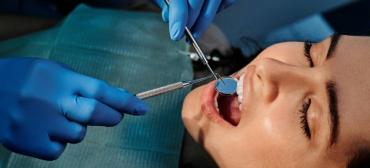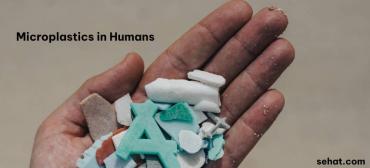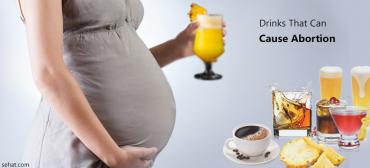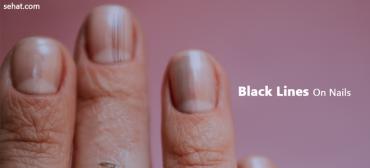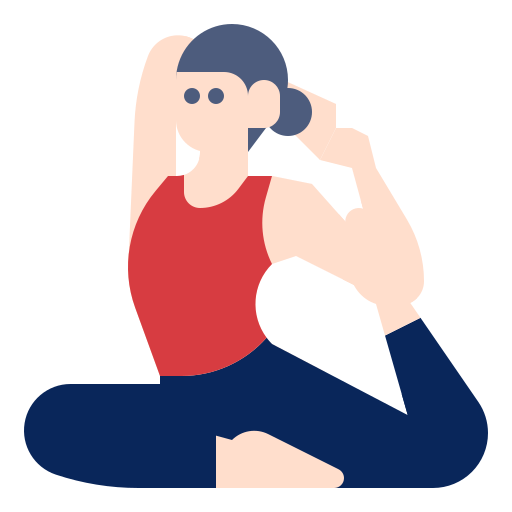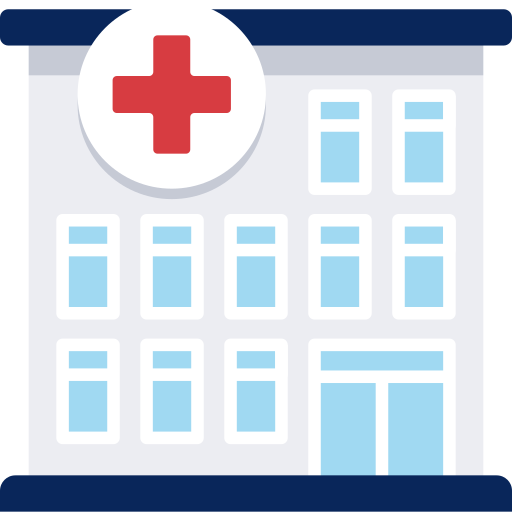Sudden Infant Death Syndrome (SIDS)
What is sudden infant death syndrome (SIDS)?
SIDS is the sudden and unexplained death of an infant under 1 year of age. SIDS is sometimes called crib death because the death occurs when a baby is sleeping in a crib. It is the major cause of death in babies from 1 month to 1 year of age, occurring most often between 2 and 3 months of age. The death is sudden and unpredictable; in most cases, the baby seems healthy. Death occurs quickly, usually during a sleep time.
What causes SIDS?
The exact causes of SIDS are still unclear and research is ongoing. There are some factors which make babies more vulnerable to SIDS. Some risk factors are preventable, but others are not. Evidence has shown that some babies who die from SIDS have the following:
-
Brain abnormalities. Some SIDS babies are born with brain abnormalities that make them vulnerable to sudden death during infancy. Studies of SIDS victims show that many SIDS babies have abnormalities in the "arcuate nucleus," a part of the brain that probably helps control breathing and waking during sleep. Babies born with defects in other portions of the brain or body may also be more prone to a sudden death. These abnormalities may result from exposure of the fetus to a toxic substance, or a decrease in oxygen. Cigarette smoking during pregnancy, for example, can reduce the amount of oxygen the fetus receives.
-
Events after birth. Events such as lack of oxygen, excessive carbon dioxide intake, overheating, or an infection may be related to SIDS. Examples of a lack of oxygen and excessive carbon dioxide levels may include the following:
-
Respiratory infections that cause breathing problems.
-
Rebreathing exhaled air trapped in underlying bedding when babies sleep on their stomachs.
Normally, babies sense when they do not get enough air and the brain triggers the babies to wake from sleep and cry. This changes their heartbeat or breathing patterns to make up for the lowered oxygen and excess carbon dioxide. A baby with a flawed arcuate nucleus, however, might lack this protective mechanism. This may explain why babies who sleep on their stomachs are more susceptible to SIDS, and why a large number of SIDS babies have been reported to have respiratory infections prior to their deaths. This may also explain why more SIDS cases occur during the colder months of the year, when respiratory and intestinal infections are more common.
-
-
Immune system problems. The numbers of cells and proteins made by the immune system of some SIDS babies have been reported to be higher than normal. Some of these proteins can interact with the brain to change heart rate and breathing during sleep, or can put the baby into a deep sleep. Such effects might be strong enough to cause the baby's death, particularly if the baby has an underlying brain defect.
-
Metabolic disorder. Some babies who die suddenly may be born with a metabolic disorder. One such disorder is medium chain acyl-CoA dehydrogenase deficiency, which prevents the baby from properly processing fatty acids. A build up of these acid metabolites could eventually lead to a rapid and fatal interruption in breathing and heart functioning. If there is a family history of this disorder or childhood death of unknown cause, genetic screening of the parents by a blood test can determine if they are carriers of this disorder. If one or both parents is found to be a carrier, the baby can be tested soon after birth.
Who is at risk for SIDS?
About 2,300 babies in the United States die of SIDS each year. Some babies are more at risk than others. For example, SIDS is more likely when a baby is between 1 and 4 months old, it is more common in boys than girls, and most deaths occur during the fall, winter, and early spring months.
Factors that may place a baby at higher risk of dying from SIDS include the following:
-
Babies who sleep on their stomach rather than their back
-
Babies who sleep on soft surfaces, have loose bedding, and are covered by many blankets
-
Babies who share a bed with other children
-
Mothers who smoke during pregnancy (three times more likely to have a baby die of SIDS)
-
Exposure to passive smoke from smoking by mothers, fathers, and others in the household (doubles a baby's risk of SIDS)
-
Mothers who are younger than 20 at the time of their first pregnancy
-
Babies born to mothers who had no or late prenatal care
-
Premature or low birthweight babies
How is SIDS diagnosed?
The diagnosis of SIDS is given when the cause of death remains unexplained after a complete investigation, which includes the following:
-
An autopsy
-
Examination of the death scene
-
Review of the symptoms or illnesses the infant had prior to dying
-
Any other pertinent medical history
What can be done to decrease the risk for SIDS?
There currently is no way of predicting which babies will die from SIDS. However, there are a few measures parents can take to lower the risk of their baby dying from SIDS, including the following:
-
Prenatal care. Early and regular prenatal care can help reduce the risk for SIDS. Proper nutrition, no smoking or drug or alcohol use by the mother, and frequent medical checkups beginning early in pregnancy might help prevent a baby from developing an abnormality that could put him or her at risk for sudden death. These measures may also reduce the chance of having a premature or low birthweight baby, which also increases the risk for SIDS. The risk of SIDS is higher for babies whose mothers smoked during pregnancy.
-
Put your baby on his or her back for sleep, even at naptime. Parents and other caregivers should put babies to sleep on their back as opposed to on their stomach or side. Studies have shown that placing babies on their back to sleep has reduced the number of SIDS cases by as much as a half in countries where babies had traditionally slept on their stomach. The back sleep position is the best position for babies from 1 month to 1 year for sleep, including naps. Although many parents are afraid babies will choke on spit-up or vomit if placed on their back, studies have not found any evidence of increased risk of choking or other problems. Because of safety concerns, always check with your infant’s doctor before elevating the head of the crib if he or she has been diagnosed with gastroesophageal reflux.
-
Place baby on his or her stomach while awake and under supervision. A certain amount of tummy time while the infant is awake and being observed by the caregiver is recommended for motor development of the shoulders. In addition, awake time on the stomach may help prevent flat spots from developing on the back of the baby's head. Such physical signs are almost always temporary and will disappear soon after the baby begins to sit up. Avoid using infant seats, car seats, strollers, infant carriers, and infant swings for routine sleep and daily naps. These may lead to obstruction of an infant's airway or suffocation. Always place cribs, bassinets, or play yards in hazard-free areas—those with no dangling cords or wires—to reduce the risk for strangulation.
-
Proper bedding. Make sure that your baby sleeps on a firm mattress or other firm surface covered by a fitted sheet. Do not use fluffy blankets or comforters under the baby. Do not let the baby sleep on a waterbed, sofa, sheepskin, a pillow, or other soft materials. When your baby is very young, do not place soft stuffed toys or pillows in the crib with him or her. Some babies have smothered with these soft materials in the crib.
-
Temperature control: Avoid overheating. Avoid overbundling, overdressing, or covering your infant’s face or head. This will prevent him or her from getting overheated, reducing the risk for SIDS. Babies should be kept warm, but they should not be allowed to get too warm. An overheated baby is more likely to go into a deep sleep from which it is difficult to arouse. The temperature in the baby's room should feel comfortable to an adult.
-
Same room / room-share. Place baby's crib or bassinet in parents' room for first 6 months. The risk for SIDS is reduced when a baby sleeps in the same room as the mother.
-
Avoid bed-sharing. Recently, scientific studies have shown that bed-sharing between mother and baby can alter sleep patterns of the mother and her baby. While bed-sharing may have certain benefits (such as encouraging breastfeeding), there are no scientific studies demonstrating that bed-sharing reduces SIDS. Some studies suggest that bed-sharing, under certain conditions, may actually increase the risk for SIDS. Avoid putting your baby to sleep in a bed with other children or on a sofa with another person, as these have been found to increase the risk for SIDS. Infants can be brought into the parents' bed for feedings and comforting but should be returned to their own crib for sleep. Bed-sharing is not recommended for twins or other multiples.
-
Smoke-free environment. Do not smoke when you are pregnant and do not let anyone smoke around your baby. Smoking in pregnancy is a major risk factor for SIDS. Babies and young children exposed to smoke have more colds and other diseases, as well as an increased risk for SIDS.
-
Pediatric health care and immunizations. If your baby seems sick, call your doctor right away. Parents should take their babies for regular well baby checkups and routine immunizations. Claims that immunizations increase the risk for SIDS are not supported by research. If a baby ever has an incident where he or she stops breathing and turns blue or limp, the baby should be medically evaluated for the cause of such an incident.
-
Breastfeed your baby. Breastfeeding is strongly recommended for at least 6 months because of its association with a reduced risk for SIDS and other protective effects. If possible, you should breastfeed your baby because breast milk can provide protection from some infections that can trigger sudden death in babies.
-
Home monitors for babies at risk. Avoid using cardiorespiratory monitors and commercial devices—wedges, positioners, and special mattresses—to help decrease the risk for SIDS and sleep-related infant deaths. Although some electronic home monitors can detect and sound an alarm when a baby stops breathing, there is no evidence that such monitors can prevent SIDS. In 1986, the National Institutes of Health recommended that home monitors not be used for babies who do not have an increased risk for sudden unexpected death. The monitors may be recommended, however, for babies who have experienced one or more severe episodes during which they stopped breathing and required resuscitation or stimulation, premature babies with apnea (stopping breathing), and siblings of two or more SIDS babies. If an incident has occurred, or if a baby is on a monitor, parents need to know how to properly use and maintain the device, as well as how to resuscitate their baby if the alarm sounds.
-
Offering pacifiers during sleep time. The American Academy of Pediatrics recommends that pacifiers be used for the first year of life during routine sleep and nap time. The pacifier should not be sugar coated. Pacifiers should be cleaned and replaced often. Breastfed infants should not be started on a pacifier until one month after breastfeeding has been firmly established.
Are there any support groups for families who have experienced SIDS?
A SIDS death is a tragedy that affects family members and others as well. Many support groups are available that are experienced in helping families cope with a loss and work through their emotions associated with grieving. Consult your health care provider for recommended support groups in your community.


